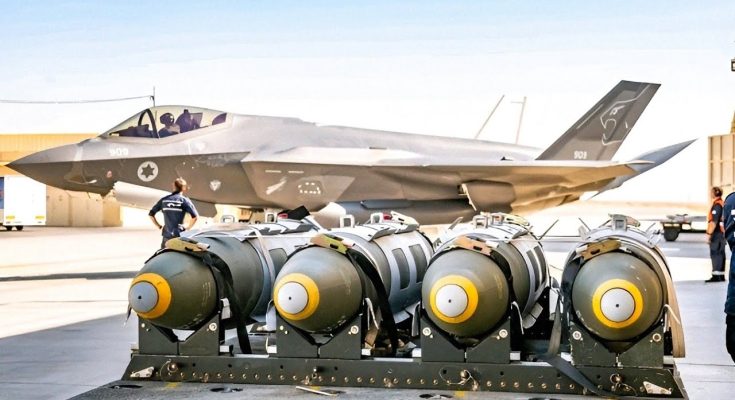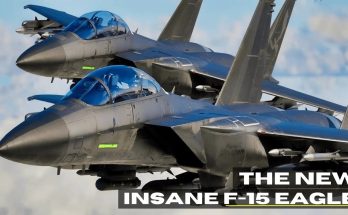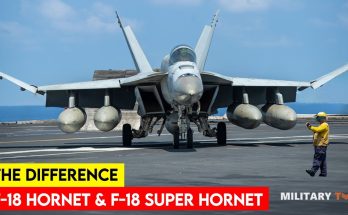F-35 Lightning II: The World’s Deadliest Stealth Fighter Ever Built
The F-35 Lightning II, developed by Lockheed Martin, stands as one of the most advanced and powerful aircraft ever built in modern aviation. As the world’s premier fifth-generation stealth fighter, the F-35 boasts unparalleled capabilities in terms of stealth, agility, sensors, and versatility. Designed to dominate in both air-to-air and air-to-ground combat, the F-35 has redefined what a fighter jet can do, earning its place as one of the deadliest and most versatile tools in the U.S. and allied air forces’ arsenals.
Stealth Technology: Invisible to Enemy Radar
The most defining feature of the F-35 is its stealth technology, which allows it to operate undetected by enemy radar. The aircraft’s airframe is designed with advanced materials and coatings that reduce its radar cross-section (RCS) to a fraction of that of conventional aircraft. This makes it extremely difficult for adversaries to detect or track the F-35, especially when it is operating in contested environments.
The aircraft’s advanced shaping minimizes the return of radar signals, allowing it to slip past even the most sophisticated radar systems undetected. The combination of stealth, low observability, and electronic countermeasures ensures that the F-35 can carry out its mission with a high probability of success, even in heavily defended airspaces.
Advanced Avionics and Sensor Fusion
The F-35 is equipped with cutting-edge avionics and sensor fusion systems that give it a significant edge over older fighter jets. The aircraft’s AN/APG-81 radar, combined with its Distributed Aperture System (DAS) and electronic warfare (EW) systems, provides the pilot with a complete 360-degree view of the battlefield. These sensors allow the F-35 to detect, track, and engage multiple targets simultaneously, while also providing real-time intelligence to the pilot.
The sensor fusion capabilities of the F-35 integrate data from various sources, including radar, infrared sensors, and electronic warfare systems, into a single, coherent display. This allows the pilot to make informed decisions quickly, identifying threats and opportunities in real-time, and executing complex missions with greater efficiency and accuracy.
Multirole Combat Capabilities
The F-35 was designed to excel in a wide range of missions, making it incredibly versatile. The aircraft comes in three variants, each tailored to meet specific mission requirements:
-
F-35A: The conventional takeoff and landing (CTOL) version, intended for use by traditional air forces, is the most common variant. It is capable of conducting air-to-air combat, close air support, precision strikes, and reconnaissance missions.
-
F-35B: The short takeoff and vertical landing (STOVL) variant is designed for operations from smaller airstrips and aircraft carriers. Its ability to take off and land vertically makes it an ideal asset for expeditionary operations and forward-deployed bases.
-
F-35C: The carrier-based version, with larger wings and strengthened landing gear, is optimized for operations on aircraft carriers. The F-35C brings the full range of stealth and precision strike capabilities to naval aviation.
Regardless of the variant, all F-35s are capable of delivering a wide array of precision-guided munitions, including Joint Direct Attack Munitions (JDAMs), Small Diameter Bombs (SDBs), and advanced air-to-air missiles. This multirole capability ensures that the F-35 can perform a wide variety of tasks, from air superiority missions to close air support, all while maintaining a level of survivability and effectiveness that is unmatched by legacy aircraft.
Unmatched Agility and Performance
In addition to its advanced stealth and avionics, the F-35 is also an agile and highly maneuverable fighter. Powered by the Pratt & Whitney F135 engine, the F-35 can reach speeds of over 1,200 miles per hour (Mach 1.6), and it has an impressive combat radius, which allows it to perform long-duration missions deep into enemy territory without the need for frequent refueling.
The aircraft’s advanced fly-by-wire system and active aerodynamics allow the F-35 to maintain high levels of maneuverability while retaining stability during high-speed flight. The combination of stealth, advanced avionics, and superior agility makes the F-35 a formidable opponent in both dogfights and long-range precision strikes.
The Global Impact: A Force Multiplier
The F-35 is not only a game-changer for the U.S. military but also for its global allies. Over 15 countries, including the United Kingdom, Israel, Australia, and Japan, have purchased or are in the process of acquiring F-35s, making it the most widely distributed fifth-generation fighter in the world. This creates a powerful coalition of allies who can operate seamlessly together, sharing intelligence and supporting joint operations, further enhancing the F-35’s effectiveness on the global stage.
The F-35 is seen as a force multiplier for allied air forces, providing them with the ability to execute joint operations with unparalleled interoperability and coordination. This interconnectedness enhances the overall military strength of U.S. and allied forces, making them more effective in any conflict scenario.
Conclusion
The F-35 Lightning II is truly the world’s deadliest stealth fighter ever built. With its unparalleled combination of stealth, advanced sensors, multirole capabilities, and agility, it has redefined what a modern fighter jet can achieve. Its ability to operate undetected in contested environments, while executing a wide range of missions with deadly precision, makes it an invaluable asset for the U.S. and its allies.
As the F-35 continues to enter service with more nations and undergo ongoing upgrades, it will remain at the forefront of military aviation for decades to come, ensuring that it retains its position as the most advanced and lethal combat aircraft in the world.



